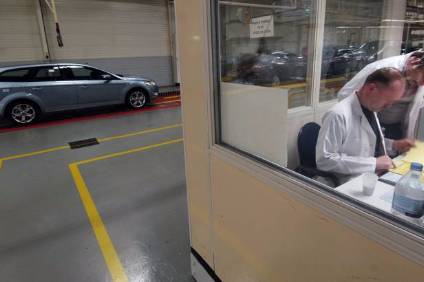
From September 2018, all new cars registered in Europe, India, South Korea and Japan will have to report their official fuel economy and CO2 figures according to the WLTP – the Worldwide harmonised Light Vehicle Test Procedure. In Europe, this replaces the outdated NEDC test (New European Driving Cycle) introduced in the '80s and aims to better reflect the real-world consumption and emissions performance of new cars. Following the revelation that BMW has had to pause or cease manufacture of some models thanks to the upcoming WLTP introduction, we consider what implications the new procedure has for OEMs.
Why the change to WLTP?
The outgoing NEDC test was introduced in 1992 alongside Euro 1 emissions standards. It measured CO2 and fuel economy through repeated patterns of acceleration, cruising, deceleration and idling in laboratory conditions to mimic driving in a European city. Subsequent updates added higher-speed sections to reflect fast highway driving. A common complaint surrounding the NEDC was the occasionally vast discrepancy between figures recorded while on test, and those captured in the real world. For many owners, it was simply impossible to match their vehicles' claimed performance.
What happens on a WLTP test?
While it's still a lab-based test, the WLTP is claimed to more accurately reflect real-world driving habits, producing more realistic emissions figures. Changes include increasing the total distance covered to 23.25km from 11, increasing the maximum speed from 120kph to 131kph, and gearshift points being specific to each vehicle rather than uniform across many different types.
Additionally, the WLTP is designed to more accurately reflect the performance of hybrids and fully electric vehicles. For purely battery-powered electric cars, the test is conducted at a state of 100% charge, then the car is immediately reconnected to a charger once it finishes. A meter on the charging cable then reveals how much electricity the car has used and how much was lost during the charging process. For plug-in hybrids, the test is repeated numerous times – initially with a full battery, but with charge depleting every cycle until only the combustion engine powers the vehicle. From this, a 'Utility Factor' can be determined to give an indication of the vehicle's electric-only range.

US Tariffs are shifting - will you react or anticipate?
Don’t let policy changes catch you off guard. Stay proactive with real-time data and expert analysis.
By GlobalDataSimilar to the NEDC, the WLTP test is conducted in laboratory conditions on a rolling road. This still produces results that will be hard to replicate in the real world with temperature changes and wind resistance, but the figures are expected to be noticeably closer to the figures consumers will actually see and remain comparable from one model to another. Vehicles are categorised based on their power-to-weight ratio – the majority of conventional passenger cars fall into the top Class 3 so perform a version of WLTP that includes fast highway driving. Like the NEDC, the cycle itself includes periods of acceleration, braking, cruising and idling to mimic real-world driving behaviour.
To represent a meaningful improvement in accuracy over the NEDC, the WLTP features more realistic driving behaviour including faster acceleration, shorter braking distances, higher average and maximum speeds, and a greater breadth of simulated road types. Additionally, the WLTP is tested at a fixed 23 degrees Celsius to accurately recreate average European temperatures. Specifications covering the way a car is set up to be tested such as tyre pressures or whether windscreen wipers are fitted are made much stricter – probably in response to anecdotal reports that some OEMs were cheating the NEDC by removing such items.
The implications for OEMs
It's too early to truly understand the long-term implications for OEMs of the introduction of the WLTP. This is because it remains to be seen how legislators will respond in terms of taxation strategies to the inevitable changes in vehicles' CO2 figures. Unquestionably, recorded CO2 levels will be higher under the WLTP than the NEDC because the testing procedure includes faster, more aggressive driving styles.
The chart below demonstrates the typical jump in CO2 figures affecting vehicles tested under the WLTP:

Source: TNO (The Netherlands Organisation for Applied Scientific Research)
Clearly, these models have all seen a significant increase in their CO2 figures as a result of the WLTP, almost certainly accompanied with an equivalent decrease in their claimed fuel efficiency. While all OEMs seeking type approval through the WLTP are on a level playing field with one another, it'll still feel like a retrograde step when their previously 'clean' vehicles now report worse CO2 emissions and fuel economy figures.
From January 2019, dealers will be obliged to show WLTP emissions data for all new cars. Until then, carmakers can use an EU-developed piece of software called CO2MPAS that allows new cars tested under the WLTP to have their results converted back to an NEDC equivalent. This means OEMs can still display comparable NEDC fuel economy and CO2 data even if the vehicle was originally tested under the WLTP.
In the second part of this two-part article (second part to be published next week), we will take a closer look at the industry's response to the new testing regime.



